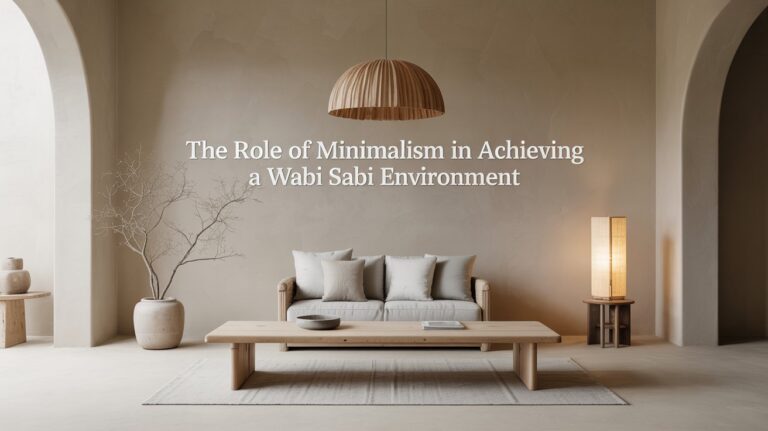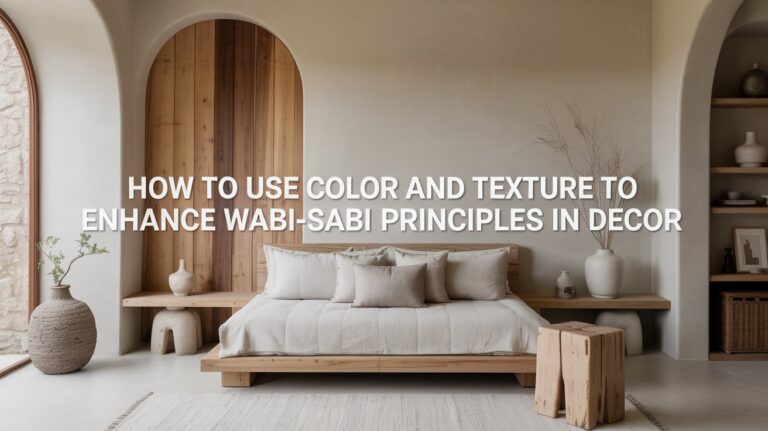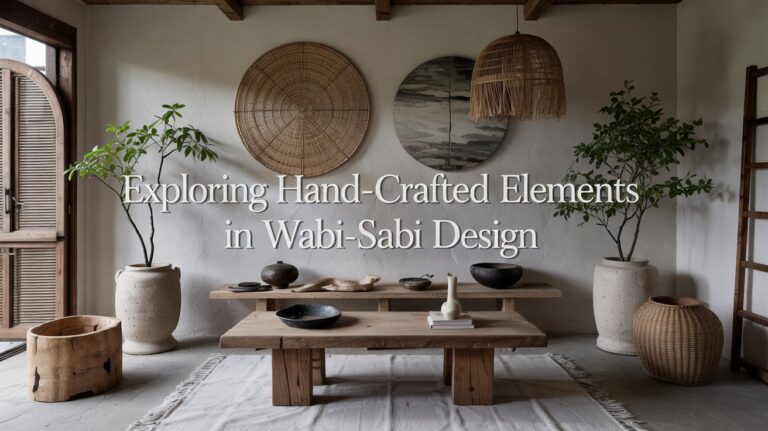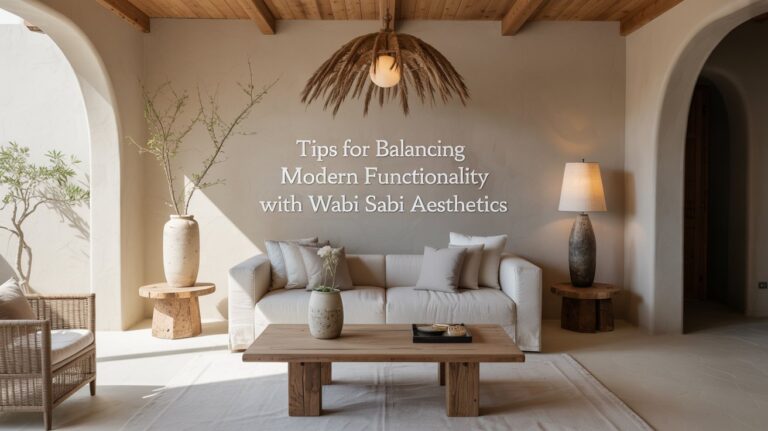How to Curate Objects and Decor That Celebrate Simplicity and Authenticity
I have been, or can be if you click on a link and make a purchase, compensated via a cash payment, gift, or something else of value for writing this post. As an Amazon Associate, I earn from qualifying purchases. Please read my full Affiliate Disclosure for more information.
Start with less, not more. Choose only pieces that serve a clear function or elevate everyday use, then let space breathe around them. Favor natural materials that age with character and invite touch. Tell a quiet story through a cohesive few—vintage finds, honest finishes, textures that deepen over time. Embrace imperfection and restraint; celebrate subtle contrasts, not loud statements. Let surfaces, tones, and spacing reveal the room’s calm harmony. If you stay curious, you’ll uncover more ways to refine this approach.
Key Takeaways
- Curate with restraint: pause before adding, ensuring each object enhances function, mood, or meaning.
- Choose natural, durable materials that age gracefully and invite touch.
- Tell a cohesive story: let objects share a common language and quiet presence.
- Embrace imperfection: highlight patina, asymmetry, and handmade character.
- Balance textures, tones, and space: prioritize purpose over ornament and maintain calm, uncluttered surfaces.
Embracing Simplicity: Principles for Thoughtful Curation
When you curate, simplicity becomes your compass: let each object earn its keep, and your space will speak clearly. Embrace minimalist aesthetics by choosing only what truly matters to you, not what merely fills space. Practice mindful selection: pause before adding anything, asking whether it enhances function, meaning, or mood. Value quiet negatives—empty corners, breathing room, tactile restraint—as much as presence. Let objects serve a purpose you understand, not a trend you forget. Your environment becomes a quiet conversation, not a collection. Clarity grows from restraint; authenticity flourishes when time and intention guide what you keep.
Choosing Materials With Character and Longevity
When you choose natural materials, you’re investing in character that ages with grace. Look for pieces that endure, developing patina over time and resisting trends. Favor low‑impact sourcing to honor both your space and the world it inhabits.
Natural Materials, Lasting
Natural materials age with character, inviting touch and history into a space. You’ll choose textures that gain warmth over time, not trends that fade. Focus on sustainable craftsmanship: joints, finish, and sourcing tell a story of care and durability. When you select wood, stone, wool, or brick, prioritize honest appearances and tactile quality over flashy polish. Eco friendly designs aren’t about sacrifice; they’re about thoughtful choices that endure. You’ll notice how natural materials soften with use, improving the space’s honesty and calm. Keep resilience in mind: durability reduces waste, supporting a long, quiet life for your home.
Patina Over Time
Patina isn’t a trend; it’s a quiet affirmation to time. You curate with materials that gain character, not merely fill space, letting age reveal depth. Embrace textures, marks, and subtle wear as part of the story.
- Choose metals and woods that age gracefully.
- Seek surfaces that develop a soft patina, not scratches to hide.
- Prioritize craftsmanship over disposable polish.
- Allow natural contrasts—vintage charm meets aged elegance.
In this approach, your space feels purposeful, honest, and lasting. You’ll notice how simplicity, patience, and restraint create a calm, timeless ambiance that resonates with authenticity.
Low-Impact Sourcing
Low-Impact Sourcing starts with choosing materials that endure, not just impress. You seek pieces that age gracefully, revealing character over time. Prioritize materials with longevity, minimal processing, and repairability, so your decor lasts. Your choices reflect eco friendly practices and thoughtful supply chains, reducing waste from the start. Favor suppliers who disclose origin, methods, and impact, aligning with ethical craftsmanship. Question coatings, solvents, and finishes that creep with use; favor natural, non-toxic options when possible. Seek authenticity over novelty, embracing patina as a sign of responsible stewardship. By design, your space remains calm, purposeful, and resilient, built to endure and tell a honest story.
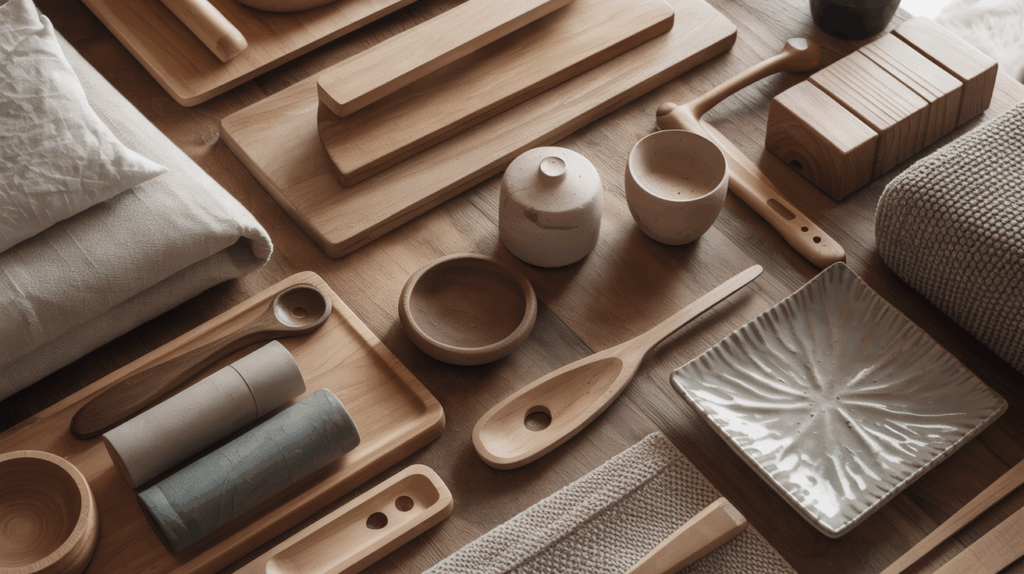
Building a Cohesive Collection Through Storytelling
Storytelling is the key to a cohesive collection: each object should speak a similar language, inviting a quiet, unforced dialogue across pieces. You build unity by a shared thread—memory, mood, meaning.
- Curate pieces that reveal vintage treasures with a soft, timeless presence.
- Pair items that carry personal stories, echoing each other without shouting.
- Favor materials and finishes that age gracefully, like conversations that deepen.
- Arrange subtle contrasts to illuminate a single theme, not a list of highlights.
Keep descriptions brief; let objects speak. The collection becomes a quiet narrative you can live with daily.
The Art of Imperfection: Celebrating Wabi-Sabi in Decor
You notice how imperfect beauty quietly speaks, turning flaws into charm. Let honest materials tell the story, their texture and patina inviting you to pause. In this light, imperfection becomes a deliberate, timeless design choice.
Imperfect Beauty Emerges
Imperfection isn’t a flaw to hide but a signal that objects carry a story. You’ll discover beauty in restraint, texture, and the quiet where time speaks.
- Observe a single flaw that adds character
- Blend handmade artifacts with calm spaces
- Cherish vintage finds that carry memory
- Let irregularities guide soulful arrangement
Imperfect beauty invites focus; it simplifies without stripping soul. You curate with intention, honoring aged finishes and subtle asymmetry. This approach honors craft, not polish, so your spaces feel human, calm, enduring. By embracing imperfection, you invite others to pause, notice, and listen to a room’s quiet honesty—where handmade artifacts and vintage finds speak softly through their imperfect glow.
Quiet, Honest Materials
Quiet, honest materials speak with restraint. You choose surfaces and fibers that reveal their origin, not their pretensions. When you touch a handcrafted textiles, you feel the craft in every weave, the patience behind each thread. Natural dyes soften tones without shouting, aging gracefully with light and time. Your space breathes because imperfection is allowed to show: a seam that isn’t perfectly straight, a glaze with subtle flaws. You resist gloss and excess, embracing texture, weight, and warmth. In quiet materials, you hear truth: simplicity, durability, and a timeless honesty that invites slower, more meaningful living.
Textures, Tins, and Tones: Balancing Without Clutter
Textures, tins, and tones can coexist without clutter when you prioritize purpose over ornament. You shape a calm vignette by choosing items that support daily life, not decoration for its own sake.
- Identify your core function
- Pair textures with restraint
- Favor muted tones that echo natural materials
- Integrate vintage textiles and artisanal ceramics thoughtfully
Each choice echoes authenticity, avoiding superfluous shine. Let surfaces breathe; group similar palettes, not identical objects. A single well-loved piece can anchor a shelf. When you balance scale and spacing, color and texture speak, not shout. You’ll see that simplicity reveals character, not absence. Your space becomes a quiet stage for everyday legacies. Keep it honest; keep it timeless.
Arranging for Calm: Creating Harmony in Everyday Spaces
Calm isn’t a mood you achieve; it’s the space you create. You arrange for calm by simplicity: select a few meaningful pieces, allow natural light, and let negative space breathe. Prioritize function over form; every item should earn its place. Aim for zen balance, where height, texture, and color feel intentional rather than crowded. Build visual harmony with a restrained palette and repeated motifs, so your eyes glide rather than hunt. Tidy surfaces, hidden storage, and consistent lighting reduce distraction. In daily life, choose quality over quantity, and let the room’s quietness invite focus, warmth, and effortless conversation.
Conclusion
You don’t need more to feel at home—you need less that feels like you. Choose items that speak softly, aged by use and intention, not trend. Let every piece tell its own small story, and let spaces breathe between them. Balance texture, tone, and purpose, then trust your instincts to keep clutter at bay. Curate with care, not cadence, and you’ll weave a calm, honest atmosphere that ages gracefully with you. Simplicity, authentically kept, remains.

